Complete Solutions to First Law Of Thermodynamics , Internal Energy And Work Done of chapter KINETIC THEORY OF GASES AND THERMODYNAMICS of Class 11 book with complete answers and questions
| Class 11 | PHYSICS |
| Chapter | KINETIC THEORY OF GASES AND THERMODYNAMICS |
| A2Z | First Law Of Thermodynamics , Internal Energy And Work Done |
| Number Of Questions | 55 |
| Academic Year | 2023-24 |
A system is said to be in thermal equilibrium if
View SolutionTwo system in thermal equilibrium with a third system separately are in thermal equilibrium with each other. The above statement is
View SolutionInternal energy of an ideal gas depends upon
View SolutionThe internal energy of an ideal diatomic gas corresponding to volume `V` and pressure `P` is `U = 2.5 PV`. The gas expands from 1 litre to 2 litre at a constant pressure of one atmosphere. The heat supplied to the gas is
View SolutionA certain mass of an ideal diatomic gas contained in a closed vessel to heated it is observed that the temperature remains constant. However, half the amount of gas gets dissociated. The ratio of the heat supplied to the gas initial internal energy of the gas will be
View SolutionAn ideal gas is taken along the path `AB` as shown in the figure. The work done by the gas is
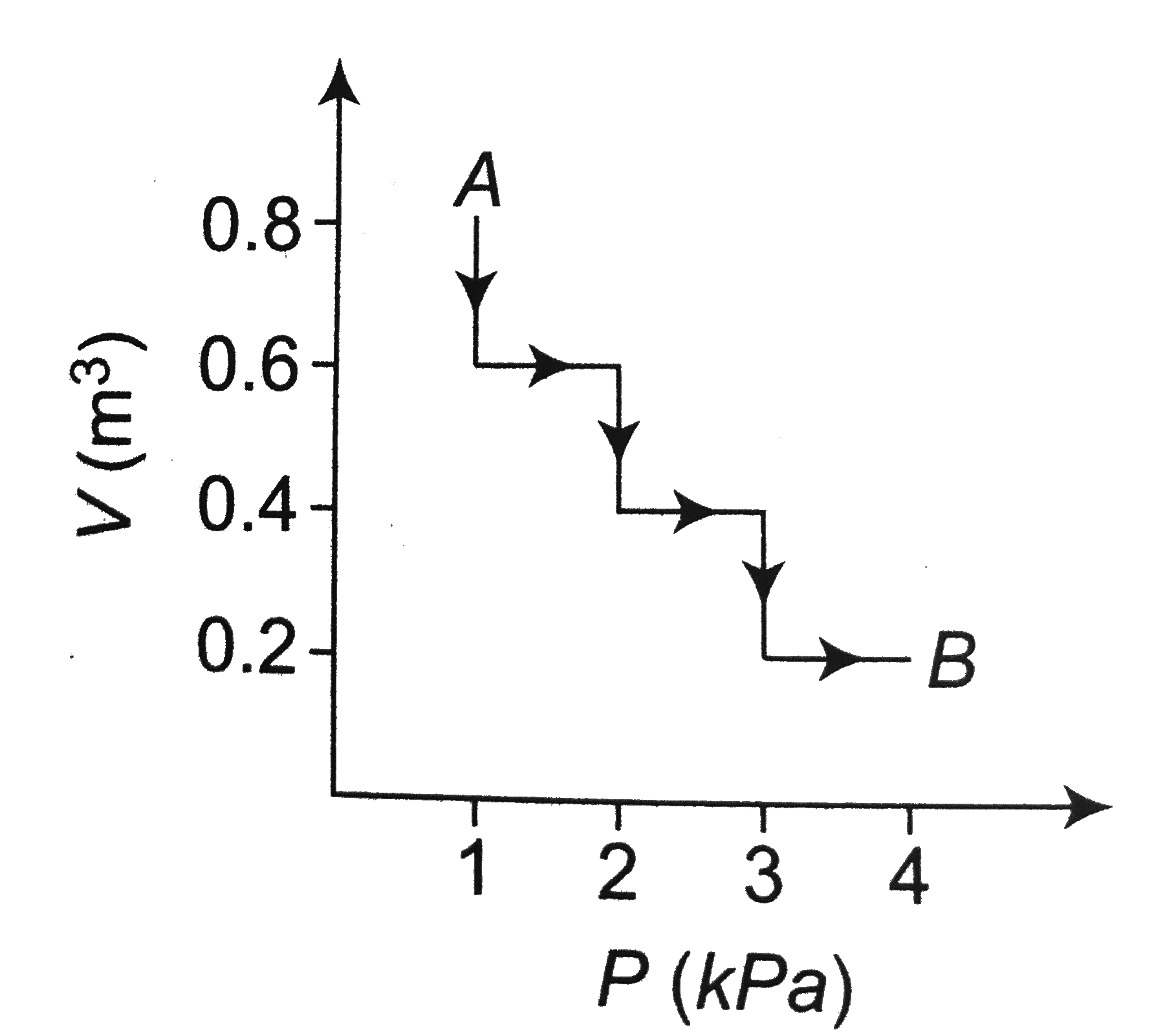
View SolutionHelium gas is subjected to a polytropic process in which the heat supplied to the gas is four times the work done by it. The molar heat capacity of the gas for the process is: (R is universal gas constant)
View SolutionWhen 1 gm of water changes from liquid to vapour phase at constant pressure of 1 atmosphre, the volume increases from 1cc to 1671cc. The heat of vaporisation at his pressure is 540 cal/gm. Increase in internal energy of water is (1 atmosphre =1.01x `10^(6)` dyne/`cm^(2)`)
View SolutionIn following figs. Variation of volume by change of pressure is shown in Fig. A gas is taken along the path `ABCDA`. The change in internal energy of the gas will be:

View SolutionWhen a system is taken from state `1 to 2` along the path `1 a 2` it absorbs `50 cal` of heat and work done is `20 cal`. Along the path `1 b 2`. `Q = 36 cal`. What is the work done along `1 b 2 ?`
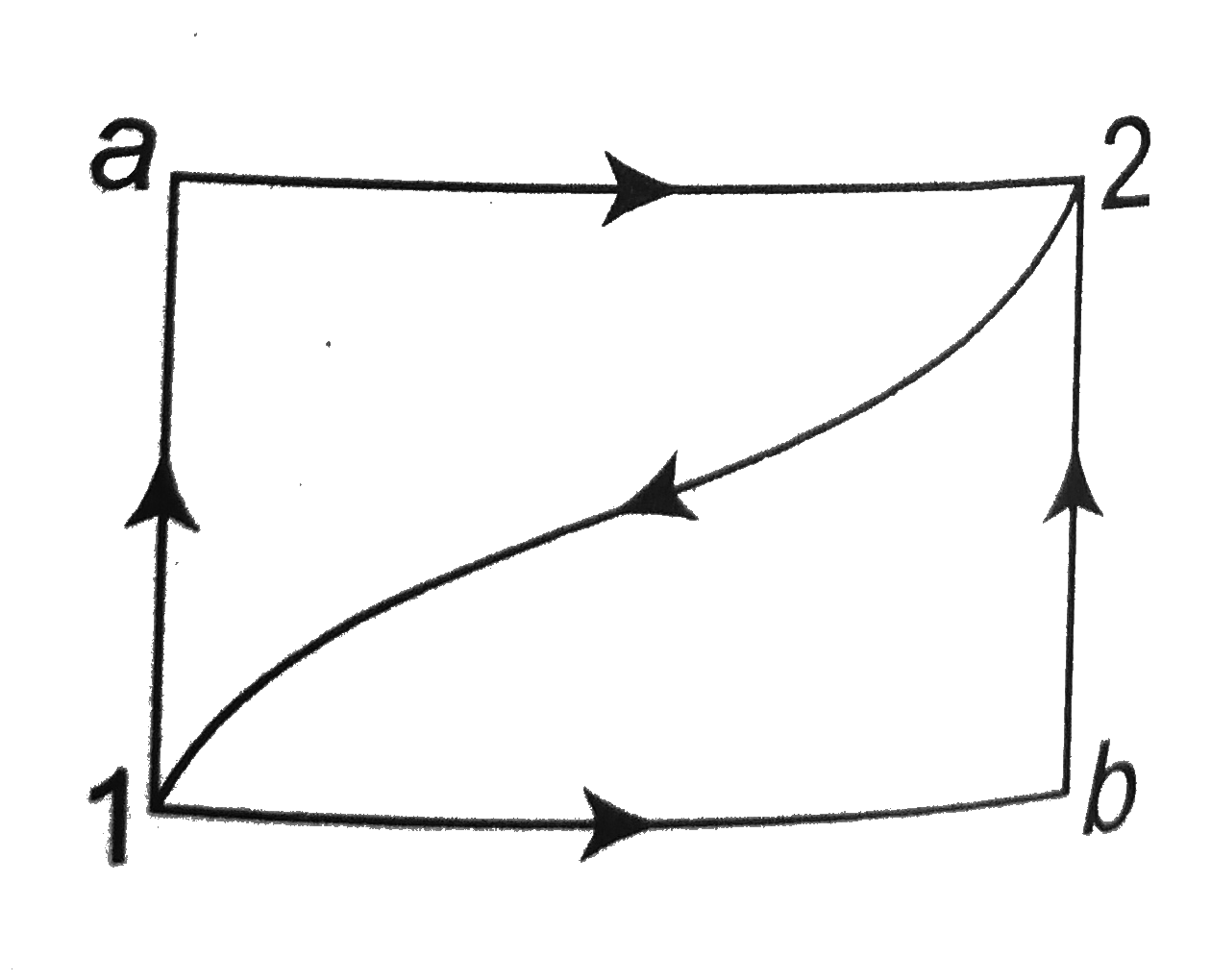
View SolutionThe ratio of work done by an ideal diatomic gas to the heat supplied by the gas in an isobaric process is
View SolutionA given mass of a gas expands from the state A to the state B by three paths 1,2 and 3 as shown in the figure, If `W_(1),W_(2)` and `W_(3)` respectively be the work done by the gas along the three paths then
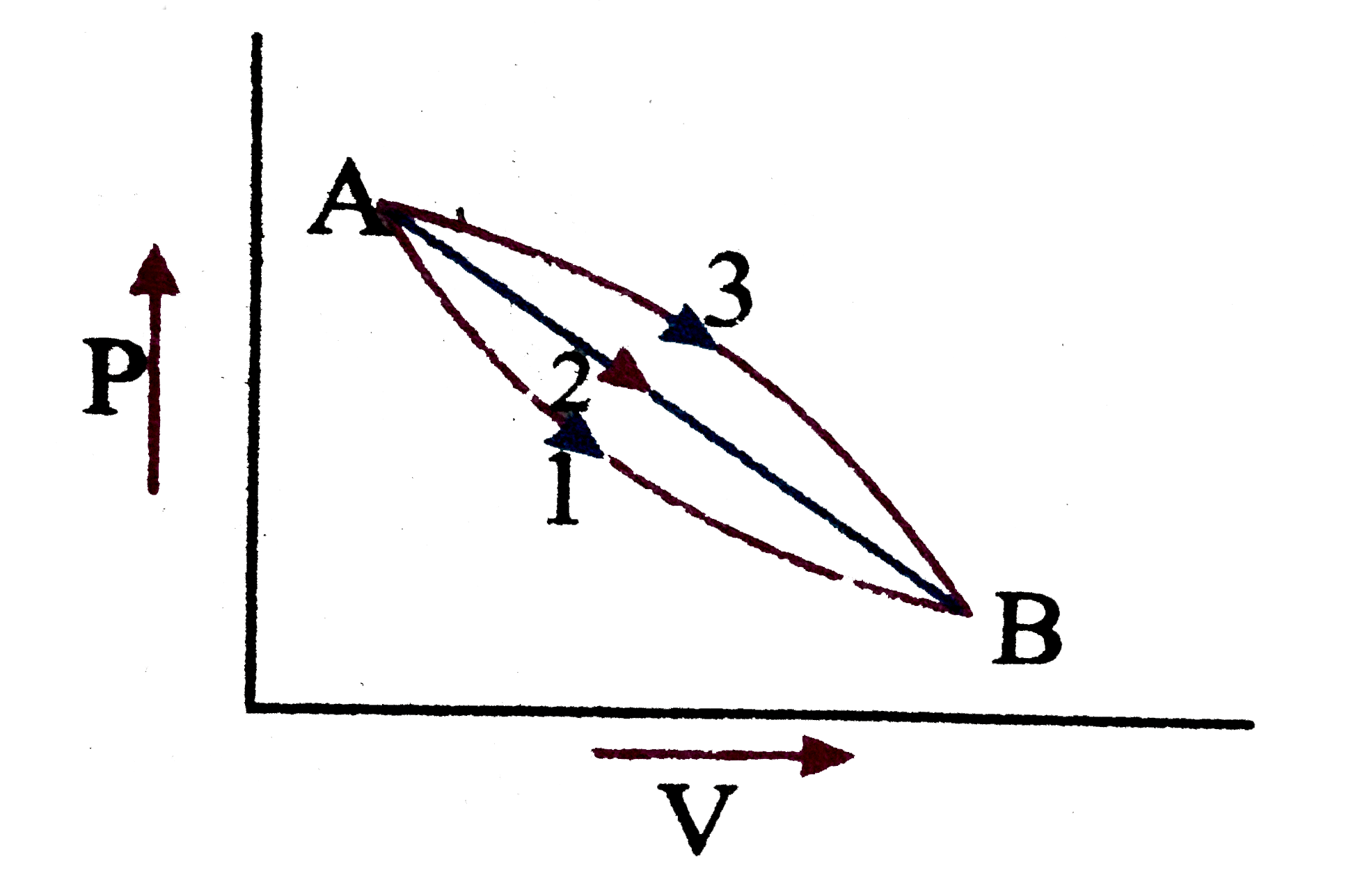
View SolutionWhen an ideal diatomic gas is heated at constant pressure, the fraction of the heat energy supplied which increases the internal energy of the gas is
View SolutionCalculate the work done by the gas in the state diagram shown.
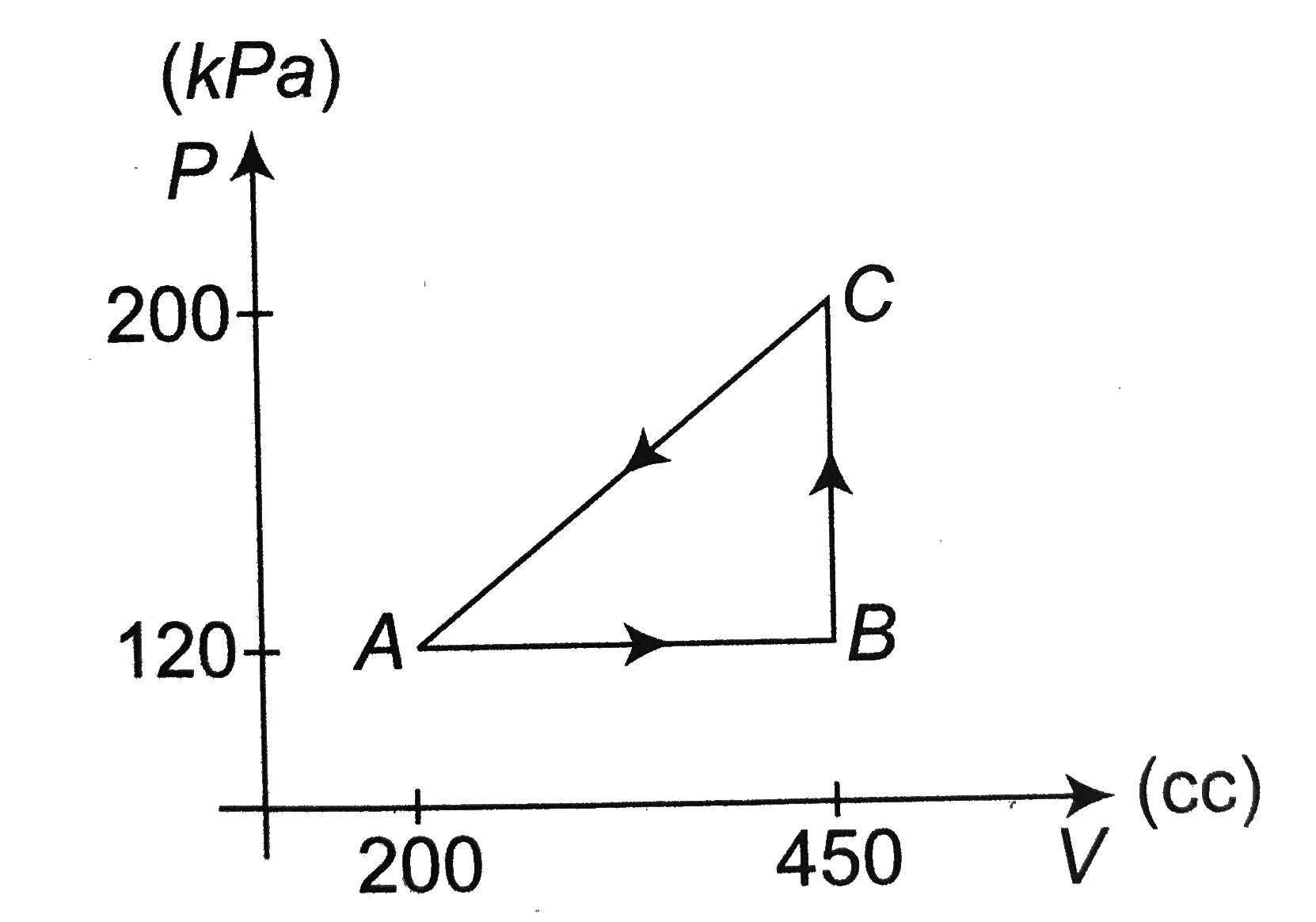
View Solution`Q` cal of heat is required to raise the temperature of `1 "mole"` of a monatomic gas from `20^(@)C to 30^(@)C` at constant pressure. The amount of heat required to raise the temperature of `1 "mole"` of diatomic gas from `20^(@)C to 25^(@)C` at constant pressure is
View SolutionA gas undergoes a cyclic process `ABCDA` as shown in the figure. The part `ABC` of process is semicircular. The work done by the gas is

View SolutionA gas mixture consists of 2 moles of oxygen and 4 moles of argon at temperature T. Neglecting all vibrational modes, the total internal energy of the system is
View Solution`1 g` mole of an ideal gas at STP is subjected to a reversible adiabatic expansion to double its volume. Find the change in internal energy `( gamma = 1.4)`
View SolutionA monoatomic gas is supplied heat Q very slowly keeping the pressure constant. The work done by the gas is
View SolutionAn ideal gas A and a real gas B have their volumes increases from `V to 2V` under isothermal condtitions. The increase in internal energy
View SolutionThe cyclic process for 1 mole of an ideal gas is shown in the V-T diagram. The work done in AB, BC and CA respectively is
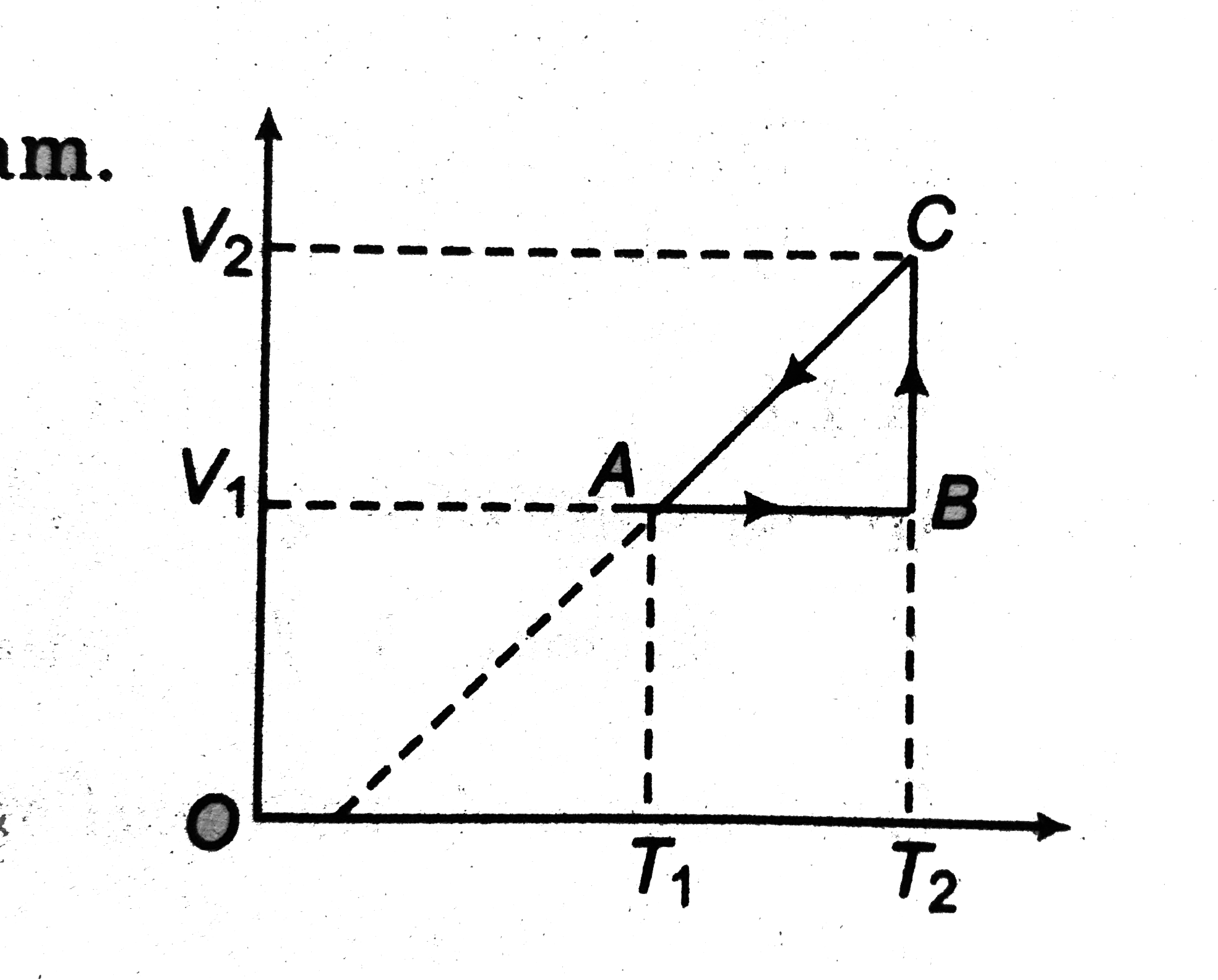
View SolutionA thermodynamic system undergoes cyclic process `ABCDA` as shown in figure. The work done by the system is
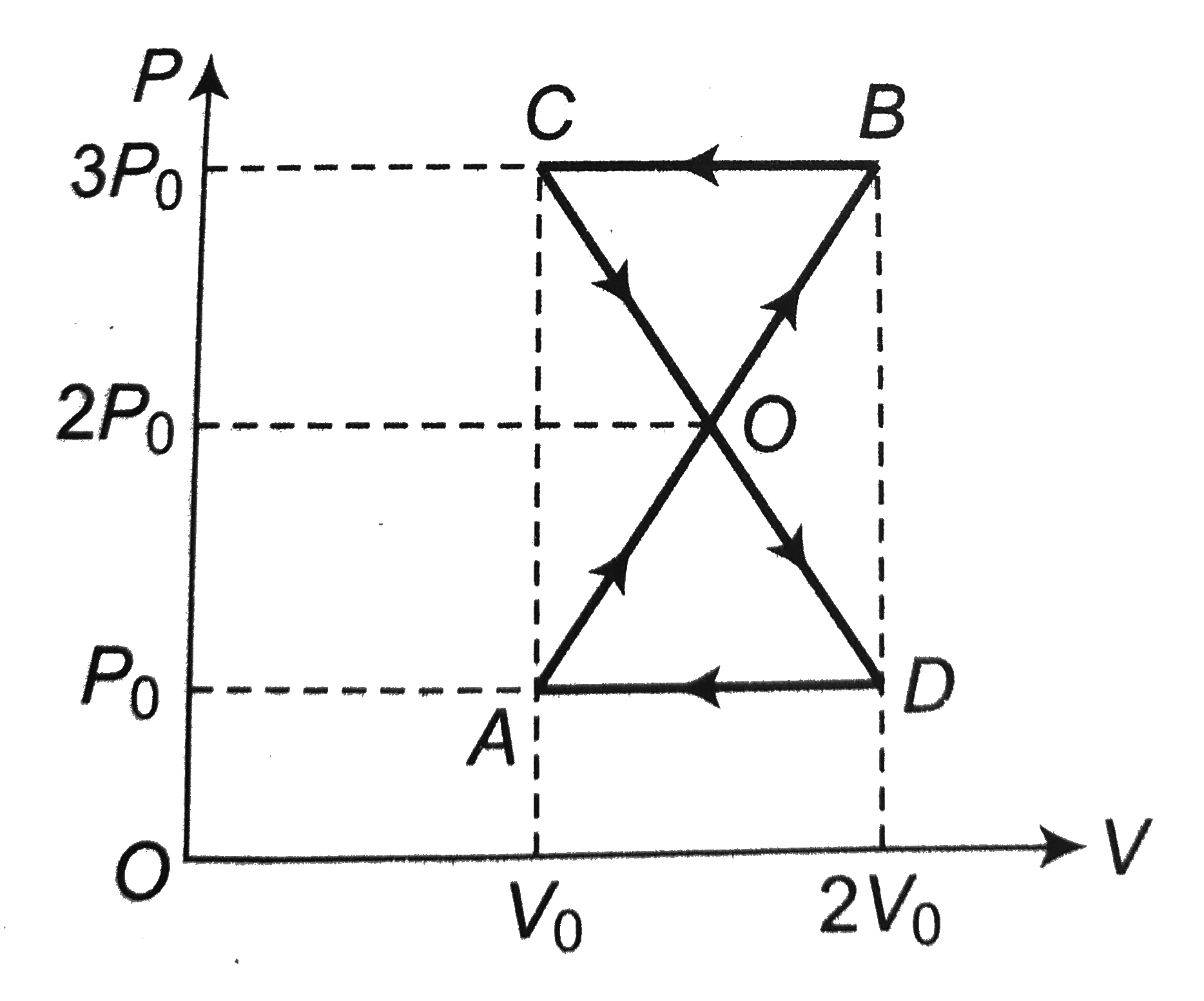
View SolutionConsider a process shown in the figure. During this process the work done by the system

View SolutionSix moles of an ideal gas performs a cycle shown in figure. If the temperature are `T_(A) = 600 K`, `T_(B) = 800 K`, `T_(C) = 2200 K` and `T_(D) = 1200 K`, the work done per cycle is
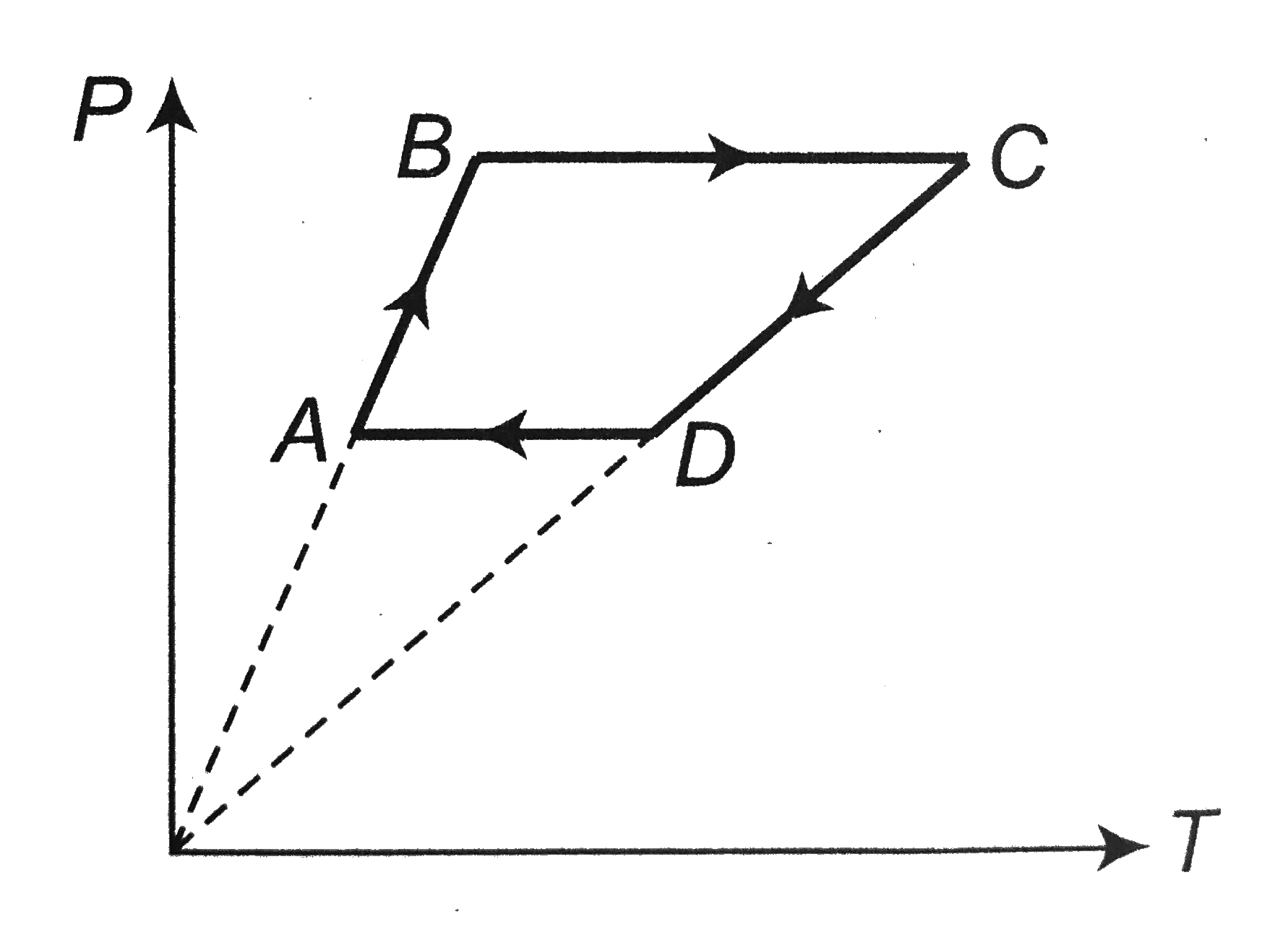
View Solution`P - V` diagram of an ideal gas is as shown in figure. Work done by the gas in process `ABCD` is

View SolutionA gas expand with temperature according to the relation `V = KT^(2//3)`. What is the work done when the temperature changes by `30^(@)C`?
View SolutionIn the `P-V` diagram shown in figure `ABC` is a semicircle. The work done in the process `ABC` is
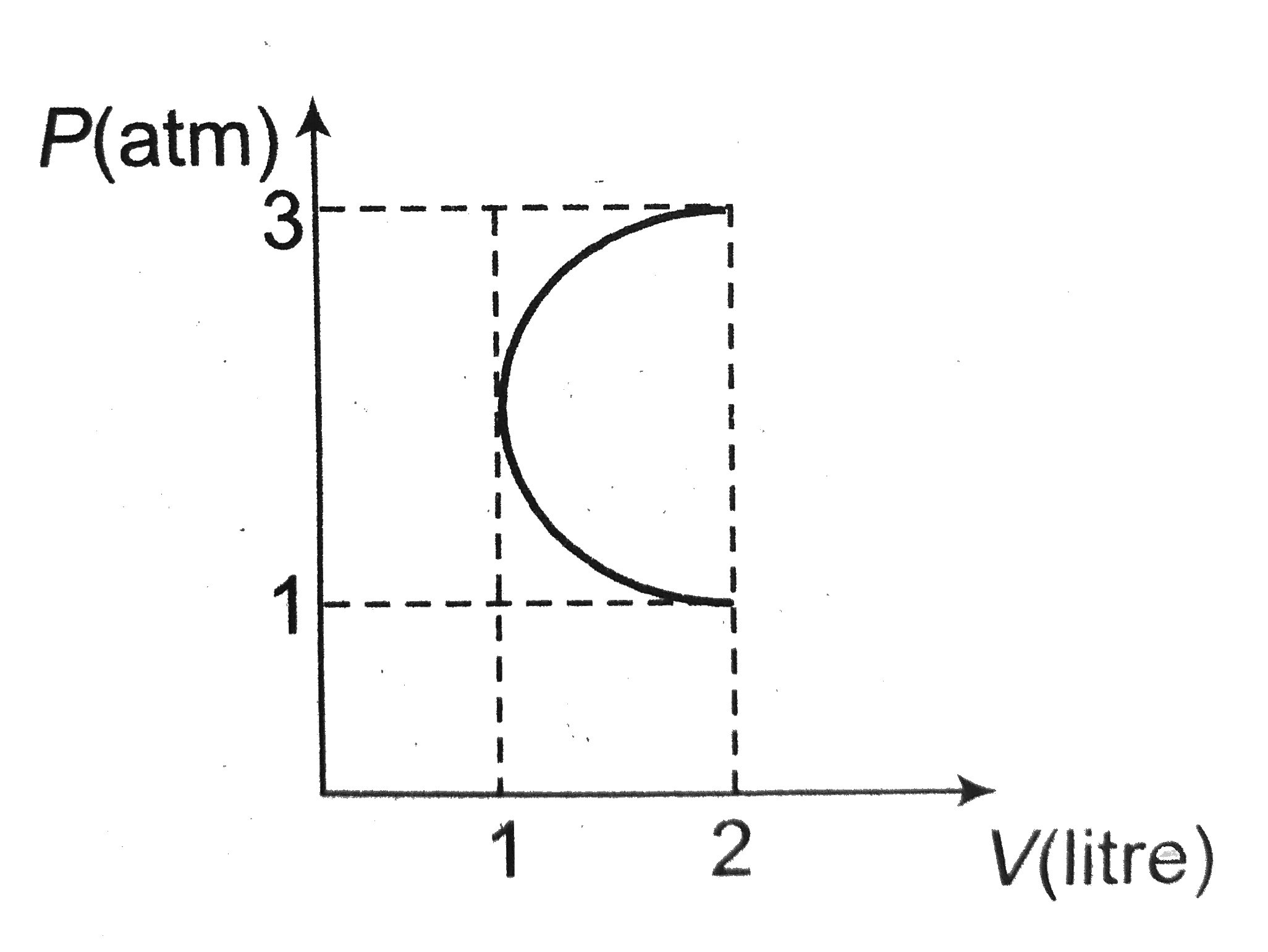
View SolutionFind the work done by the gas in the process `ABC`.

View SolutionAn ideal gas is taken through a quasi-static process described by `P = alphaV^(2)`, with `alpha = 5.00 atm//m^(6)`. The gas is expanded to twice its original volume of `1.00 m^(3)`. How much work is done by the gas in expanding gas in this process?
View SolutionFind the amount of work done to increase the temperature of one mole jof an ideal gas by `30^(@)C`, if it is expanding under condition `VooT^(2//3)`.
View SolutionWe consider a thermodynamic system. If `DeltaU` represents the increase in its internal energy and W the work done by the system, which of the following statements is true?
View SolutionWhen heat in given to a gas in an isobaric process, then
View SolutionWhich of the following is correct in terms of increasing work done for the same initial and final state?
View SolutionWhen an ideal diatomic gas is heated at constant pressure, the fraction of the heat energy supplied which increases the internal energy of the gas is
View SolutionThe molar heat capacity in a process of a diatomic gas if it does a work of `Q/4` when a heat of `Q` is supplied to it is
View SolutionAn insulator container contains `4` moles of an ideal diatomic gas at temperature T. Heat Q is supplied to this gas, due to which `2` moles of the gas are dissociated into atoms but temperature of the gas remains constant. Then
View SolutionWhich one of the following gases possesses the largest internal energy
View SolutionIn the figure given two processes `A and B` are shown by which a thermodynamic system goes from initial to final state F. if `DeltaQ_(A)` and `DeltaQ_(B)` are respectively the heats supplied to the systems then
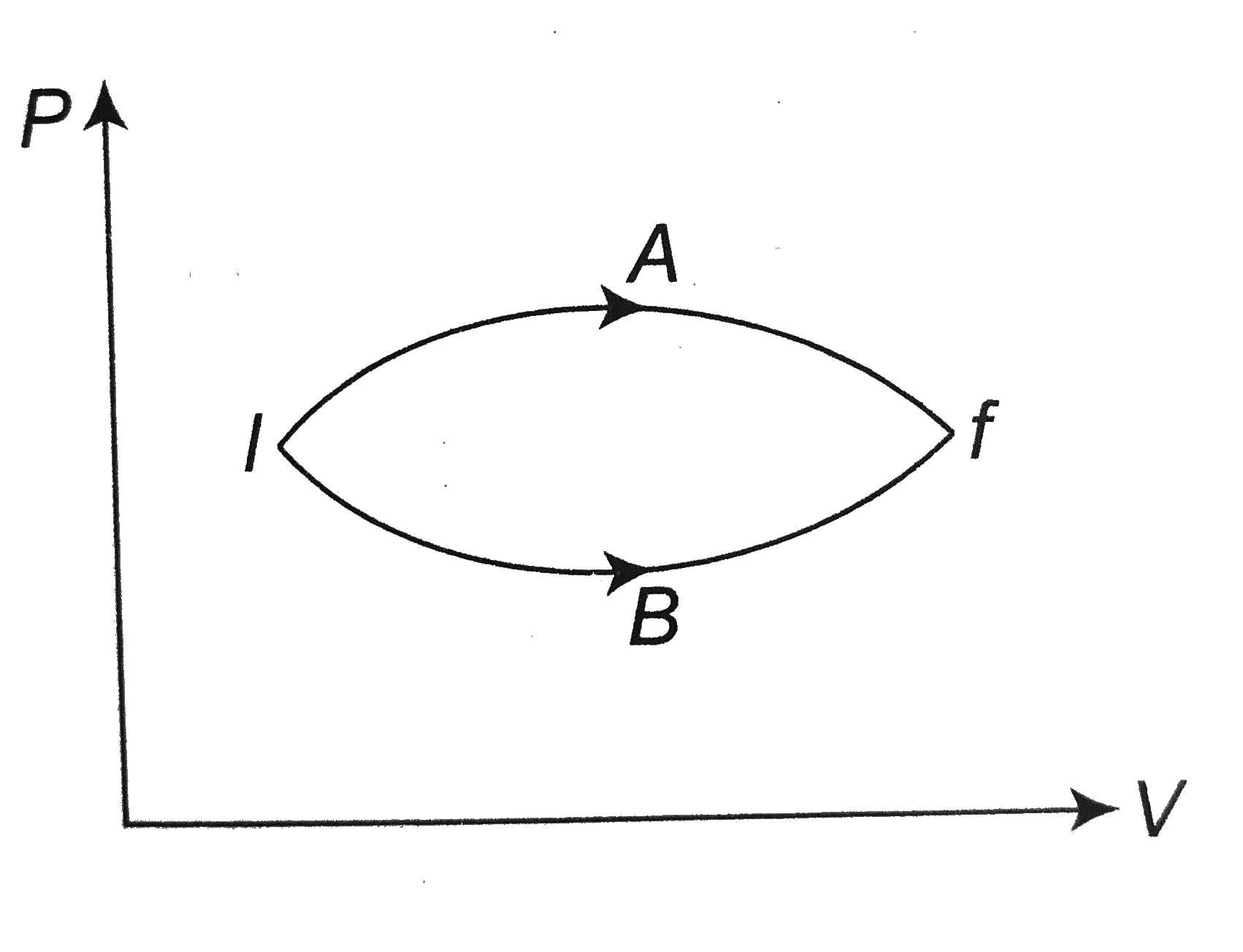
View SolutionWhen a system is taken from state f along path `iaf, Q = 50 J` and `W = 20 J`. Along path `ibf, Q = 35 J`. If `W = -13 J` for the curved return path `f I, Q` for this path is
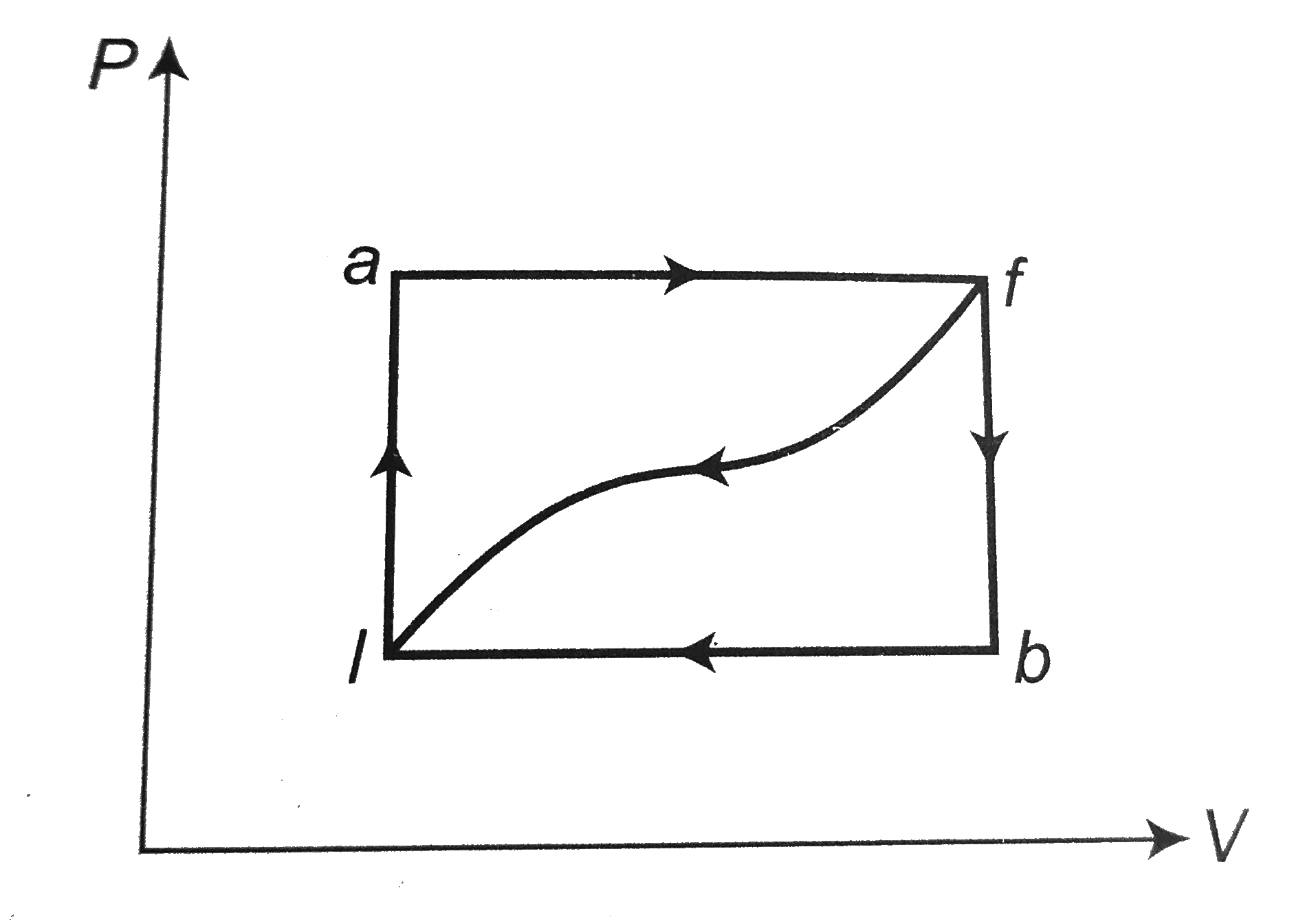
View SolutionThe `P - V` diagram of a system undergoing thermodynamic transformation is shown in figure. The work done by the system in going from `A rarr B rarr C is 30 J` and `40 J` heat is given to the system. The change in internal energy between `A and C` is
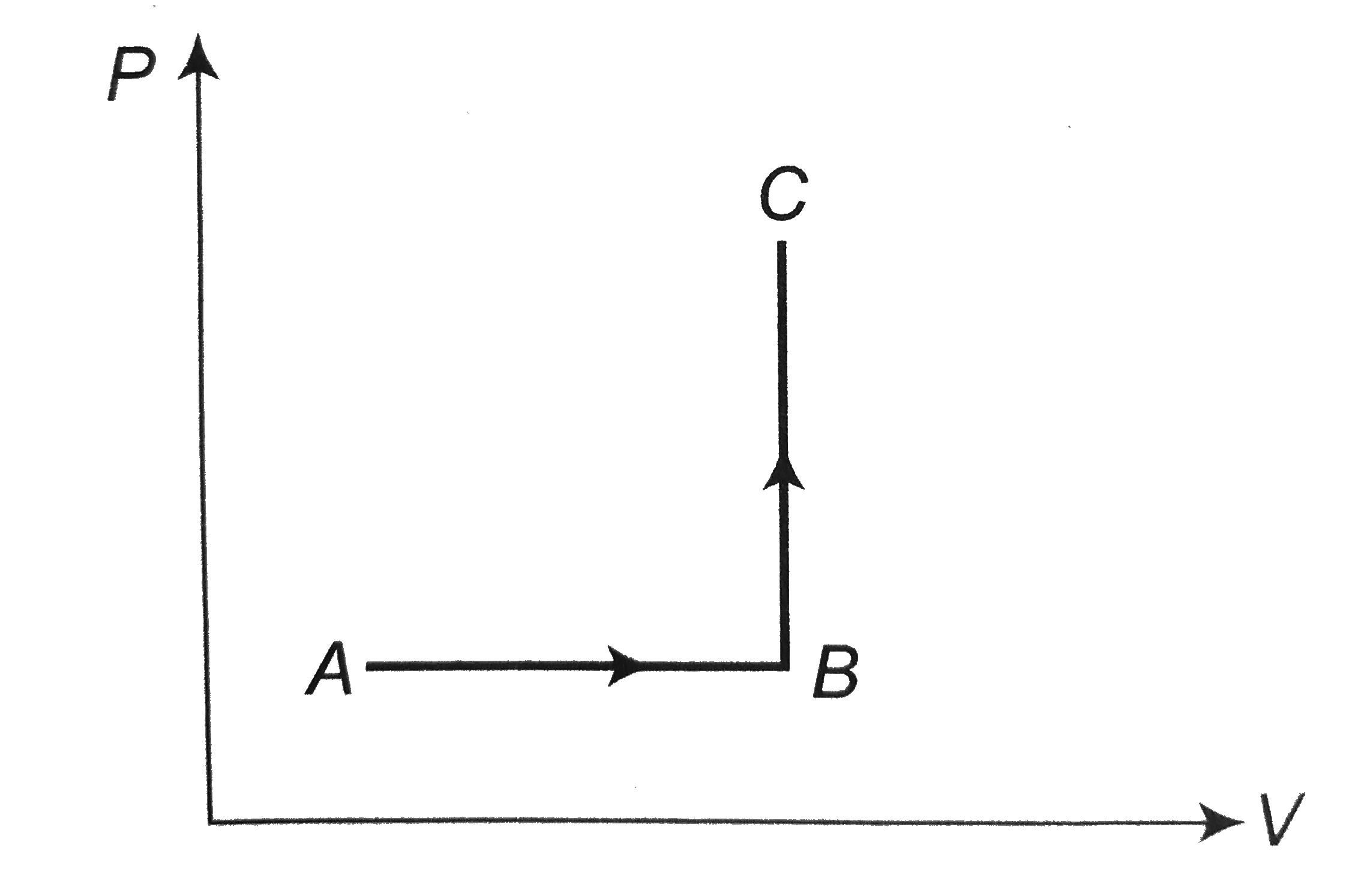
View SolutionThe `P - V` diagram of 2 gm of helium gas for a certain process `A rarr B` is shown in the figure. What is the heat given to the gas during the process `A rarr B`?

View SolutionVolume versus temperature graph of two moles of helium gas is as shown in figure. The ratio of heat absorbed and the work done by the gas in process `1-2` is
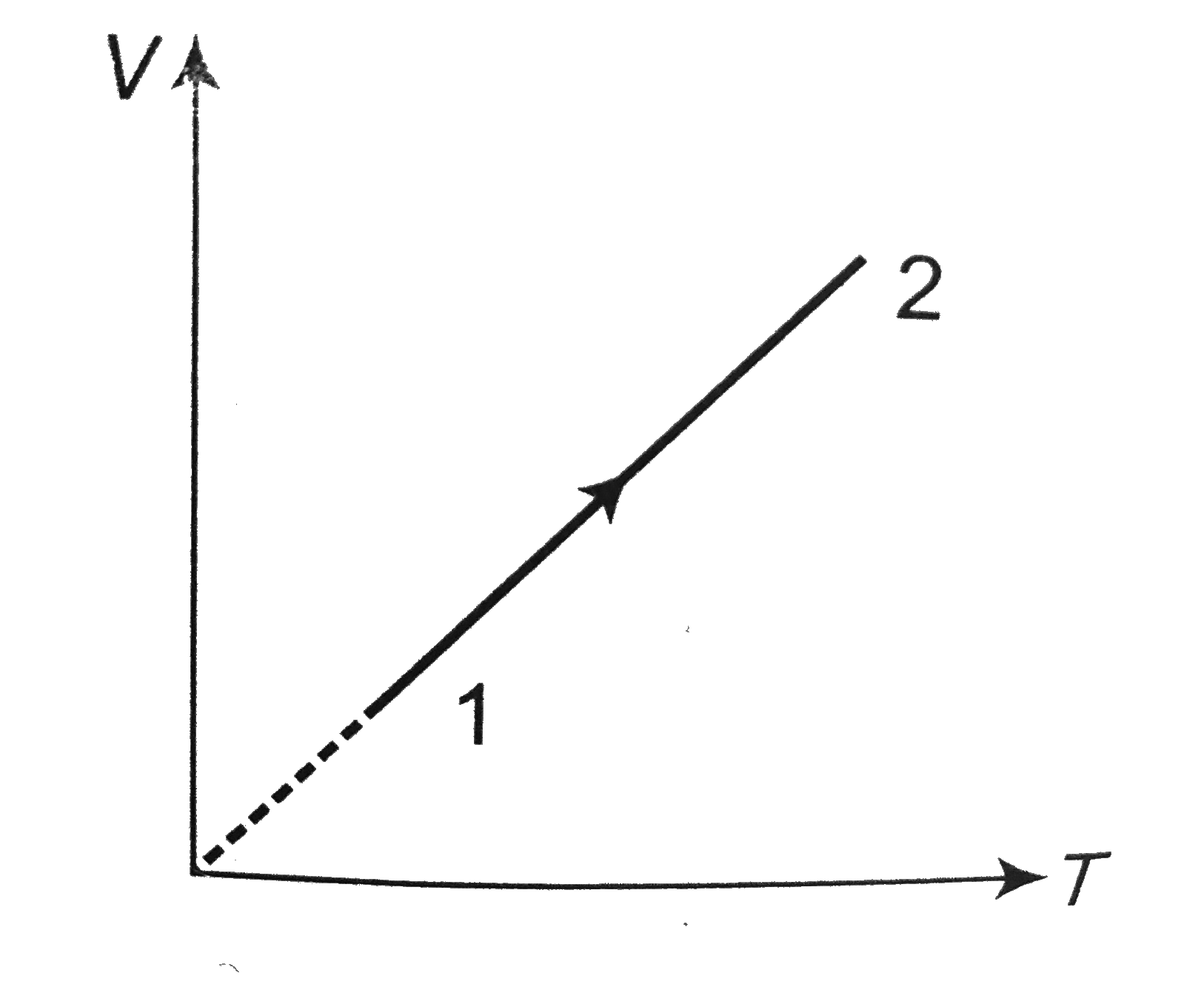
View SolutionHeat is supplied to a diatomic gas at constant pressure.
The ratio of `DeltaQ : DeltaU : DeltaW` is
View SolutionN moles of an ideal diatomic gas are in a cylinder at temperature T. suppose on supplying heat to the gas, its temperature remain constant but n moles get dissociated into atoms. Heat supplied to the gas is
View SolutionSome of the thermodynamic parameters are state variables while some are process variables. Some grouping of the parameters are given. Choose the correct one.
View SolutionIn a process, the pressure of an ideal gas is proportional to square of the volume of the gas. If the temperature of the gas increases in this process, then work done by this gas
View SolutionIn a process, the pressure of an ideal gas is proportional to square of the volume of the gas. If the temperature of the gas increases in this process, then work done by this gas
View SolutionA vessel contains an ideal monoatomic gas which expands at constant pressure, when heat Q is given to it. Then the work done in expansion is
View SolutionSuppose `0.5` moles of an ideal gas undergoes an isothermal expansion as energy is added to it as heat Q. Graph shows the final volume `V_(f)` versus Q. The temperature of the gas is `(use ln 9 = 2 and R = (25)/(3) J//mol-K)`

View SolutionConsider the cyclic process ABCA, shown in figure, performed on a sample of `2.0 mol` of an ideal gas. A total of `1200 J` of heat is withdrawn from the sample in the process. Find the work done by the gas during the part BC.
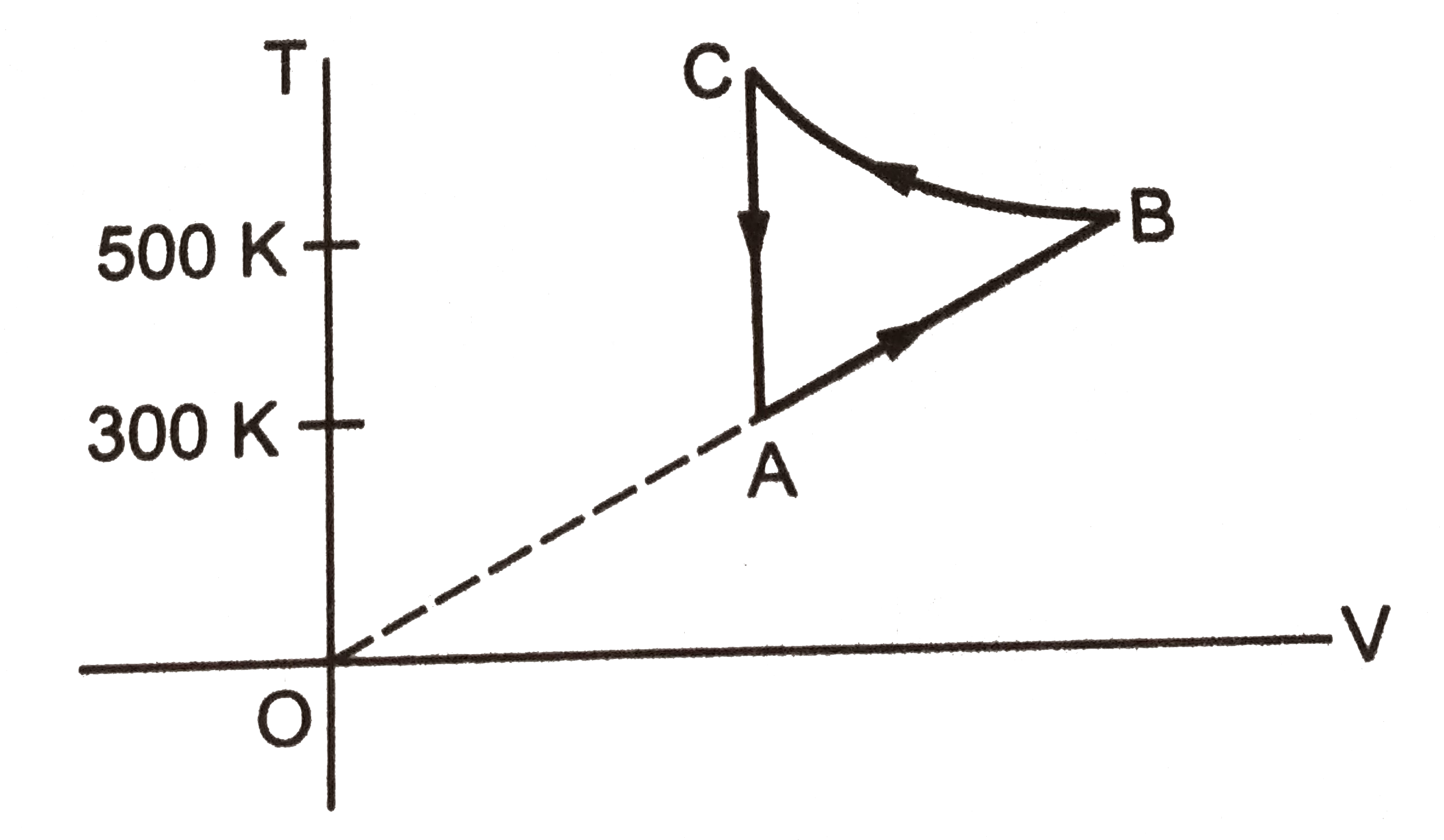
View SolutionA quantity of heat Q is supplied to a monoatomic ideal gas which expands at constant pressure. The fraction of heat that goes into work done by the gas `((W)/(Q))` is
View SolutionThree moles of an ideal monoatomic gas per form a cyclic as shown in the Fig. the gas temperature in different states are `T_(1) = 400 K, T_(2) = 800 K, T_(3) = 2400 K and T_(4) = 1200 K`. The work done by the gas during the cyclic is

View SolutionIn a thermodynamic process, pressure of a fixed mass of a gas is changed in such a manner that the gas release `20 J` of heat and `8 J` of work is done on the gas. If initial internal energy of the gas was `30 J`, what will be the final internal energy?
View SolutionAn ideal monoatomic gas undergoes the process AB as shown in the figure. If the heat supplied and the work done in the process are `DeltaQ` and Delta W` respectively. The ratio `DeltaQ : DeltaW` is
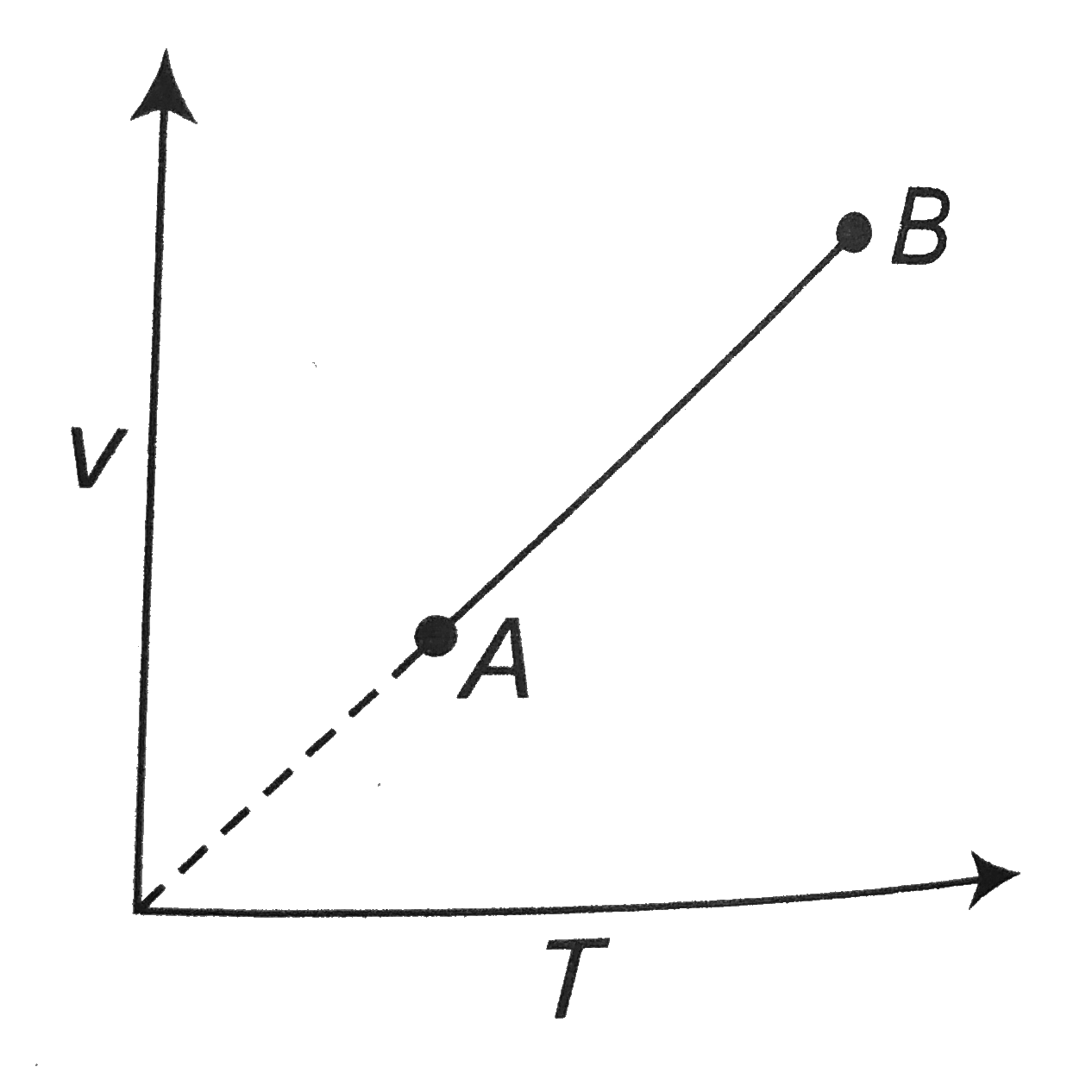
View SolutionOne mole of a gas is subjected to two process AB and BC, one after the other as shown in the figure. BC is represented by `PV^(n) = constant`. We can conclude that (where T = temperature, W = work done by gas, V = volume and U = internal energy).

View Solution
First Law Of Thermodynamics , Internal Energy And Work Done questions and complete solutions for chapter KINETIC THEORY OF GASES AND THERMODYNAMICS of A2Z PHYSICS (HINGLISH) of Class 11